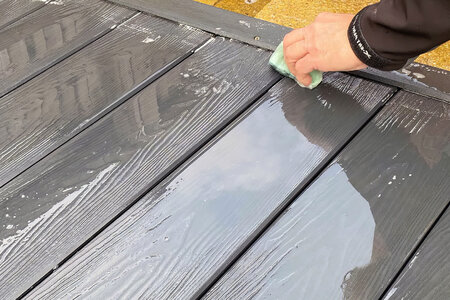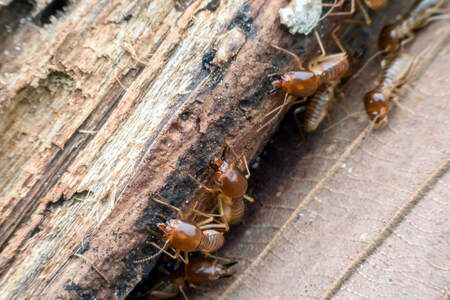
Do I Need Permission To Install A Deck?
Are you installing an outdoor deck for the first time and confused if you should get a permit for the same? Here’s all that you need to know.
Read Full StoryDecks are a neat addition to your home, serving as an aesthetically appealing and functional outdoor living space.
Unfortunately, traditional decking materials can fall prey to various sources of damage, showing rot, fading or peeling as a result. And to prevent them from happening, traditional decks need plenty of periodic maintenance.
Consider considering fibre cement decking if you want a more permanent solution to your decking problems. Made using environmentally friendly materials, fibre cement decking is highly durable and as visually striking as wood.
So, let’s dexplorefibre cement decking, its benefits, and how to construct a deck with it!

As mentioned, fibre cement decking uses environmentally friendly materials, specifically cellulose fibres, portland cement and glass. Combining these materials enables the deck to resist moisture and sun damage quite well. As a result, a fibre cement deck won’t show signs of rot, water damage or swelling.
Additionally, since it doesn’t fade away in the sun, you won’t need to repaint it for long. The only time you would need to repaint or stain it is to match the colour of your house during renovations.
Fibre cement is primarily made in a mould that contains natural wood, allowing the decking material to simulate the rustic look and feel of wood. And since it contains no plastics, the decking boards made using fibre cement appear more natural and similar to cedar wood.
Another aspect where fibre cement is better than traditional wood is that the former does not fade, chip, or peel. So, you can enjoy a deck that looks just like wood without the hassles of maintaining it periodically.
The easy deck installation process further supports all of this. With fibre cement decking, no clips or fasteners are involved to complicate things. It is as easy to install as traditional wood decking, making it reasonably straightforward.
As with the other decking options, you can’t simply dive head-first into the installation process without proper planning. After all, design and detailing are essential aspects of deck construction that you must consider well before the installation begins.
If the design or detailing considerations are neglected, it can lead to the decking material performing in a sub-par capacity at best. At worst, it may weaken over time and perhaps even collapse due to aggregated damage.
Before installing your new fibre cement decking, here are a few things to consider.
Framing requires timber or steel, and timber is often susceptible to termites. These pests can hollow the frames from the inside out, weakening them and causing structural damage to your deck.
Ensure that any wood you use is termite-resistant or has been treated with preservatives. Doing so will keep your deck-to-wall junction intact, even after years of use.

Floor joists should be thick enough and entirely straight to be considered fit for installation. The suggested thickness is 45mm.
If you’re using steel as the framing material, then the base thickness of each framing member should be between 0.6mm and 1.9mm. Additionally, the framing must be corrosion-resistant and durable enough to support your deck well.
For wood framing, in addition to the suggestion in the previous point, the end grain of timber members should be primed. This will further strengthen the wood against moisture ingress and rot.

One of the advantages of fibre cement decking is that it is flexible when deciding upon the layout. You can lay the decking boards out in several directions to create unique patterns and add a visual flair to your home. Layouts like standard 90-degree parallel or 45-degree parallel are two of the most common ones.
You can add a few variations to these layouts using symmetrical joints, aligned corners, fascia, and board overhangs. A design can be varied in several ways, all of which must be decided beforehand.
You will need the following tools and materials to construct a fibre cement deck:
Installing fibre cement decking is a simple 9-step process, which will allow you to finish construction in a relatively short time. They are as follows:
Once you’ve decided upon a design, prepare a frame for it while ensuring the minimum ground clearance is 150mm. If you install a termite barrier, the space between your walls and the deck substructure should also be about 25mm.
Next, place the first board with an overhang over the substructure, after which you can temporarily secure it using the edge cap.
With the first board in place, slide the base jointer into it. This will secure the base jointer, allowing you to slide the second board into it. Leave a 10mm gap at the base jointer junctions for drainage purposes.
Next, affix the base jointer at every joist using the correct screw types for timber and steel. At this point, you can safely remove the temporary edge cap.
The process for each following board remains the same; follow this step until you’ve covered the designated area.
Paint your deck within 60 days of installation to give it a proper finish. This time limit decreases dramatically if you live in a coastal area or the deck is close to a pool; it is reduced to seven days.
Once the coating dries, affix the snap-in top strip between the joints and the selected edge capping around the perimeter. AYourdeck is ready.

As mentioned earlier, maintaining fibre cement decking is simple, requiring the bare minimum to remain pristine. You only need to wash it occasionally using a garden hose and conduct regular inspections and repairs to enhance its longevity.
You may begin seeing the paint on your deck cracking or peeling away once it has aged sufficiently. By painting your deck once a decade, you can prevent this from happening entirely.
And even if your deck does show signs of wear, you may be able to fix them through touch-up paint.
Signs of moisture damage in your decking may indicate poor wall clearance or ventilation underneath the deck. Inspect your deck for the source of the damage, and apply the caulk in areas where you see penetrations, flashing, and between plank joints.
Remember that the caulk you use should be permanently flexible.
Resolving installation defects is a simple matter of finding the cause of the defect and resolving it appropriately. These defects are usually seen in areas with nails.
To resolve these issues, use appropriately sized nails and drive them in straight, taking care not to over- or under-drive them.
Fibre cement decking is one of the most promising options on the market. The upkeep and damage resistance are low, and you can customise it in numerous ways.
Installing it is as straightforward as installing timber, requiring just a little planning. With clear designs and a plan of action, you can have a trusted Sydney-based professional take care of it.
For all your decking needs, contact Final Touch Carpentry & Construction. Our licensed experts can install, renovate, or repair decking. Feel free to contact us today!
Are you installing an outdoor deck for the first time and confused if you should get a permit for the same? Here’s all that you need to know.
Read Full StoryLearn how to clean and maintain your composite decking with our guide. Follow our easy steps and tips for a brand new look. Contact Final Touch Carpentry and Constructions for expert help.
Read Full StoryLooking for ways to protect your decking from termite colonies? We’ve got you covered with our guide. Final Touch cover everything you need to know about termites and your timber deck.
Read Full Story

